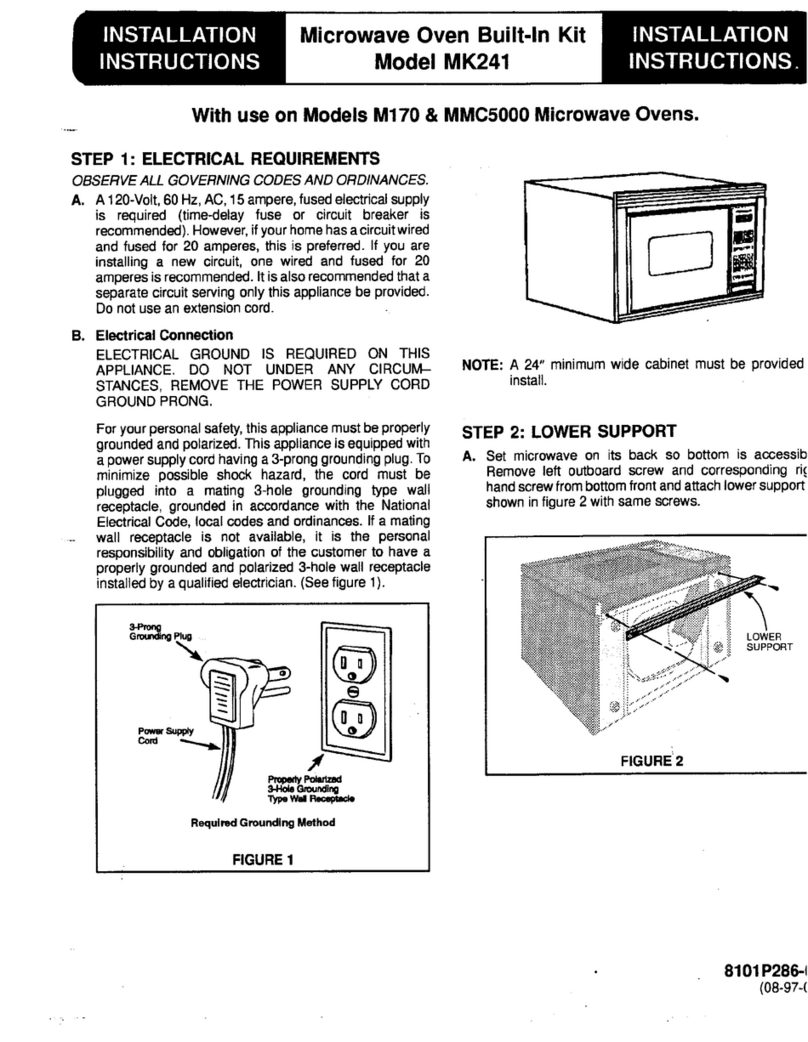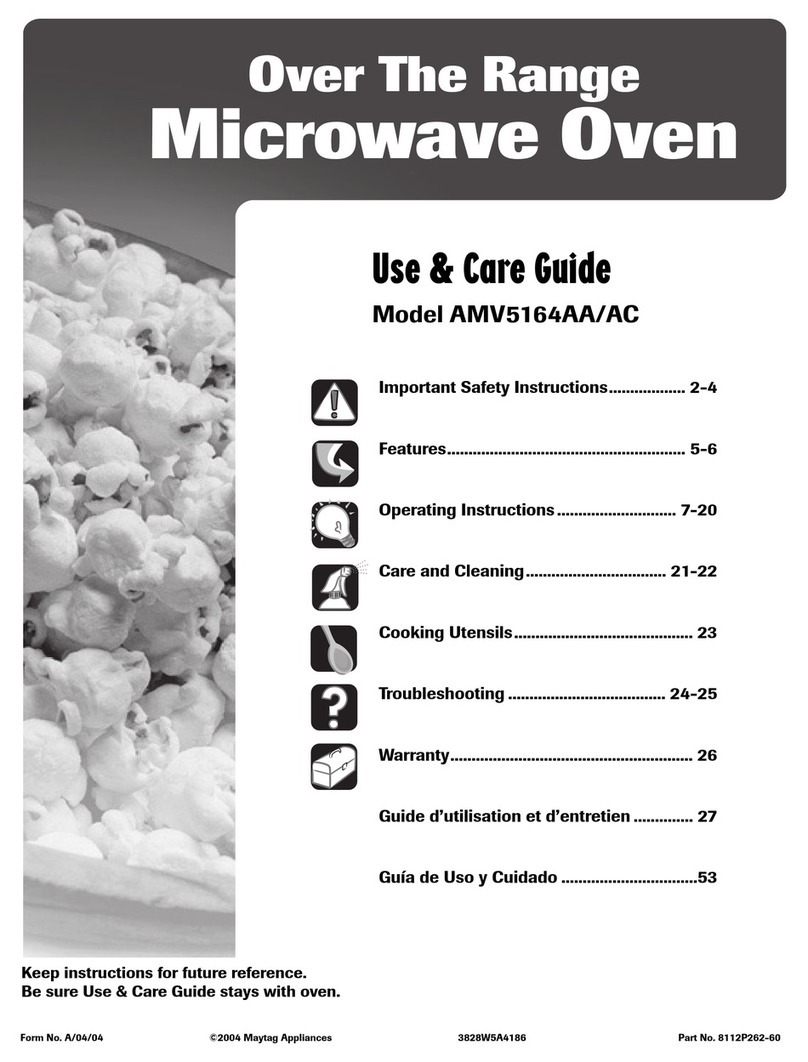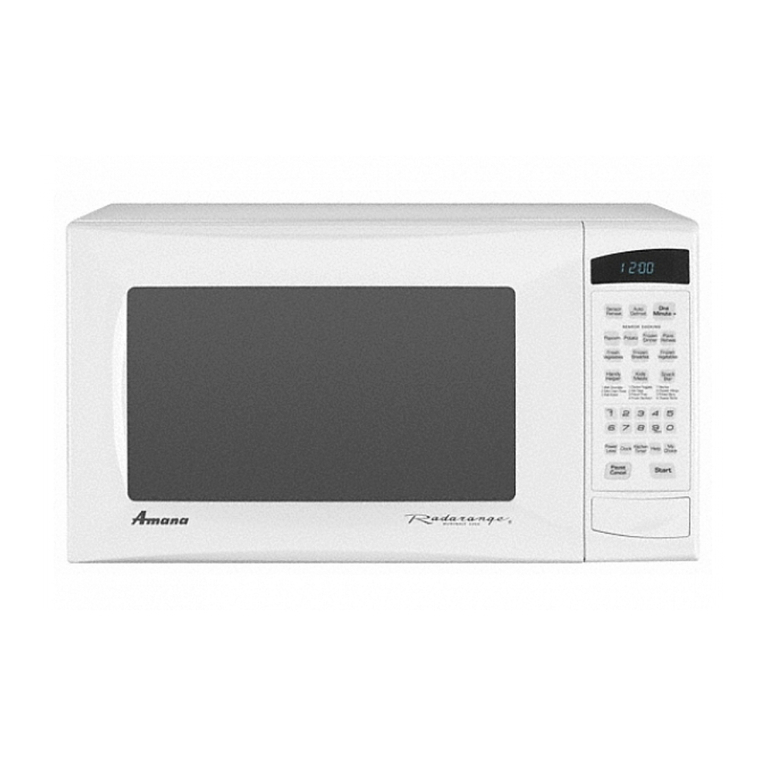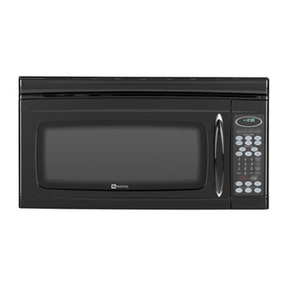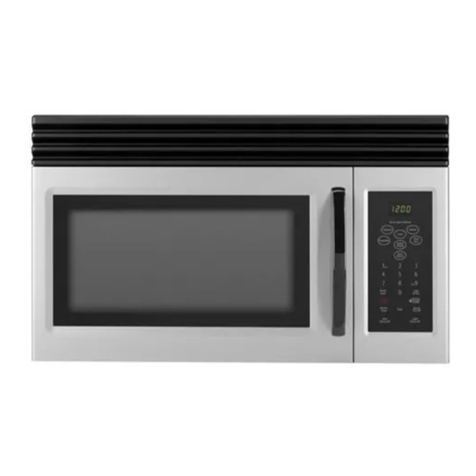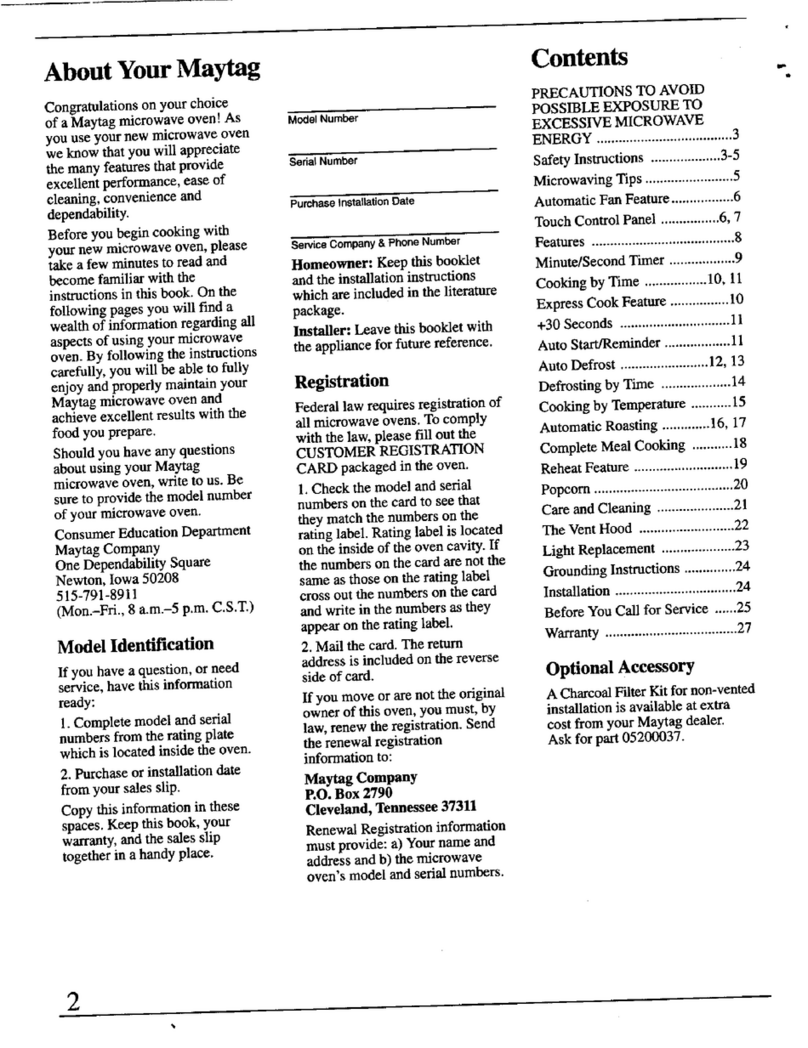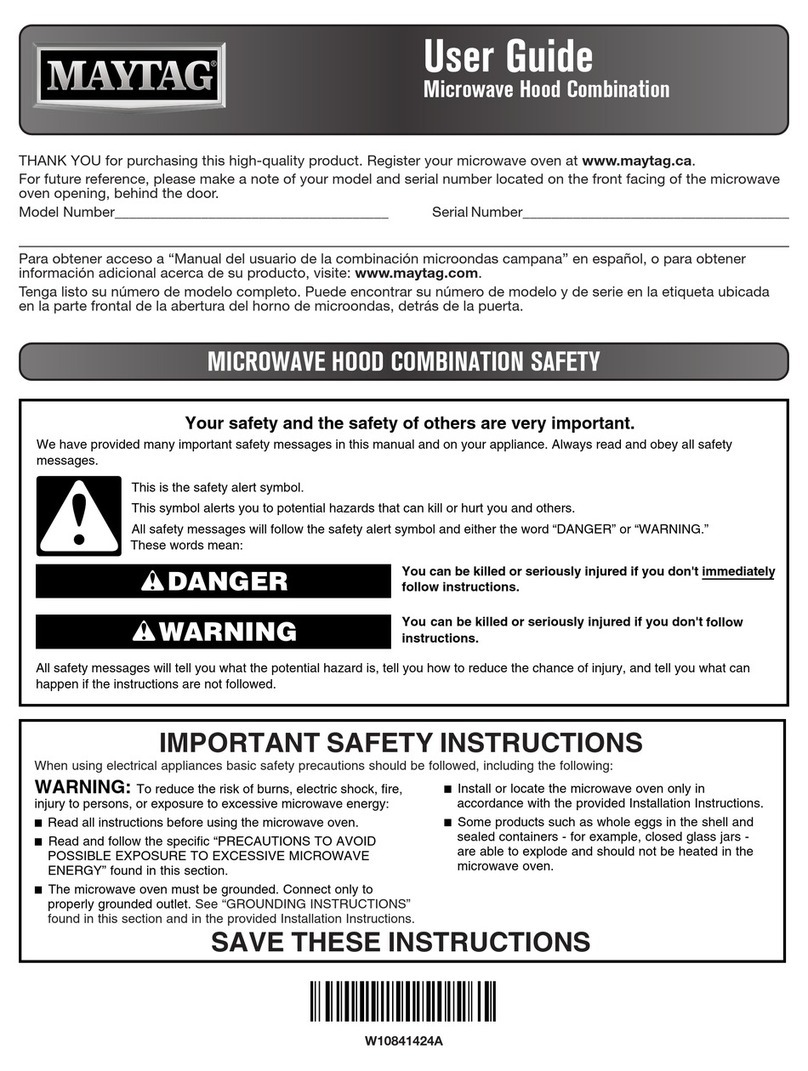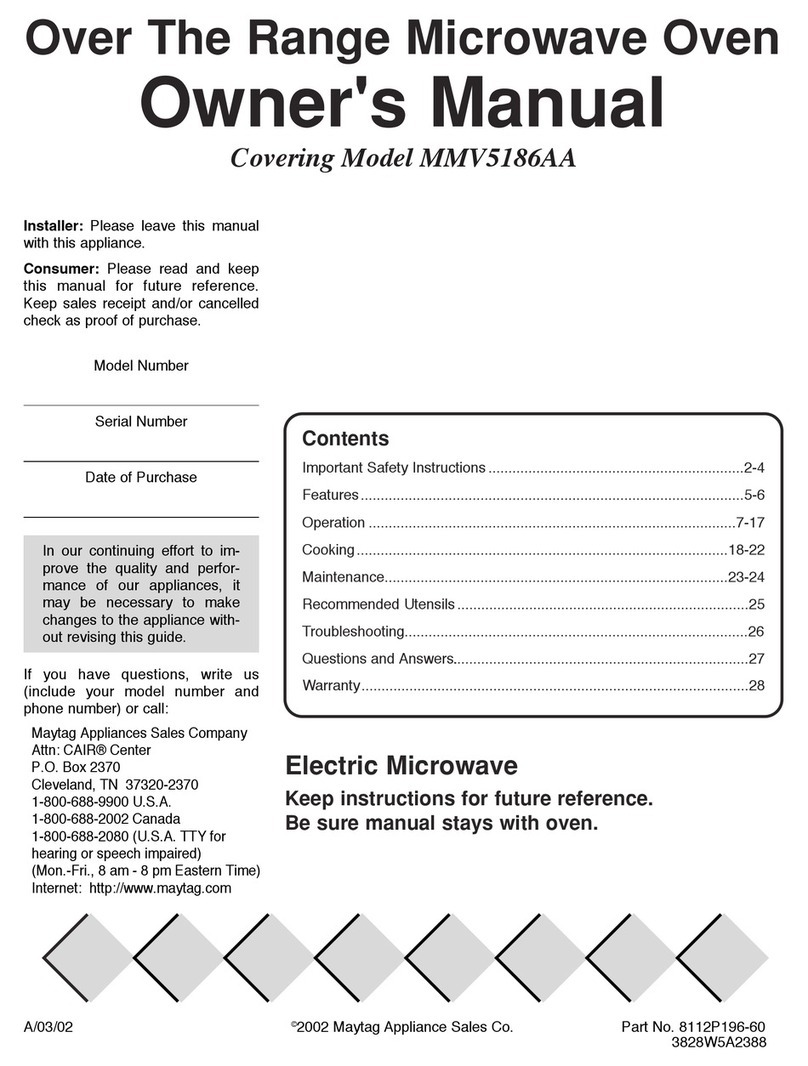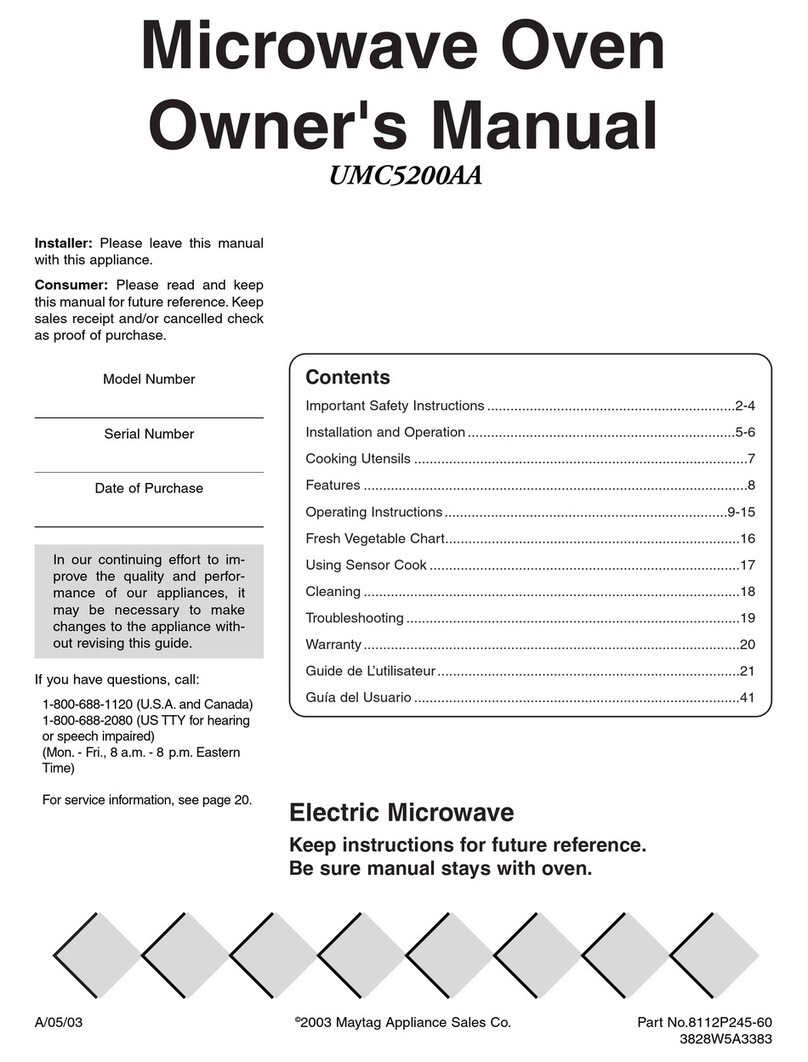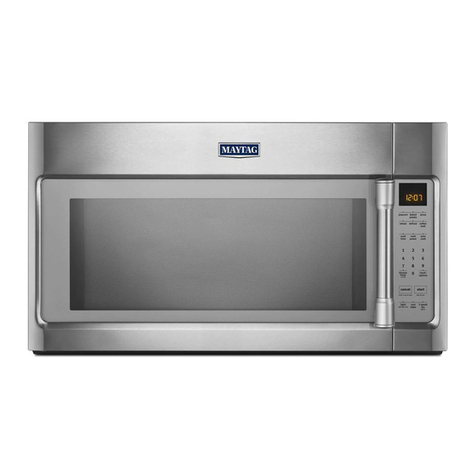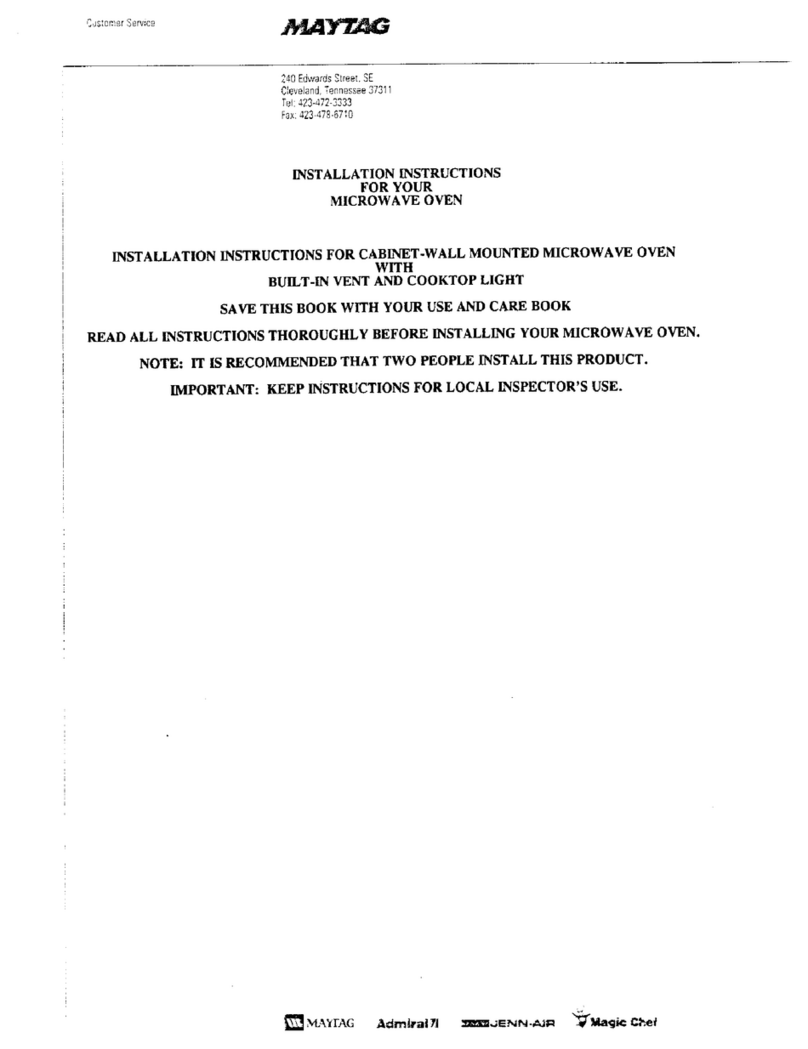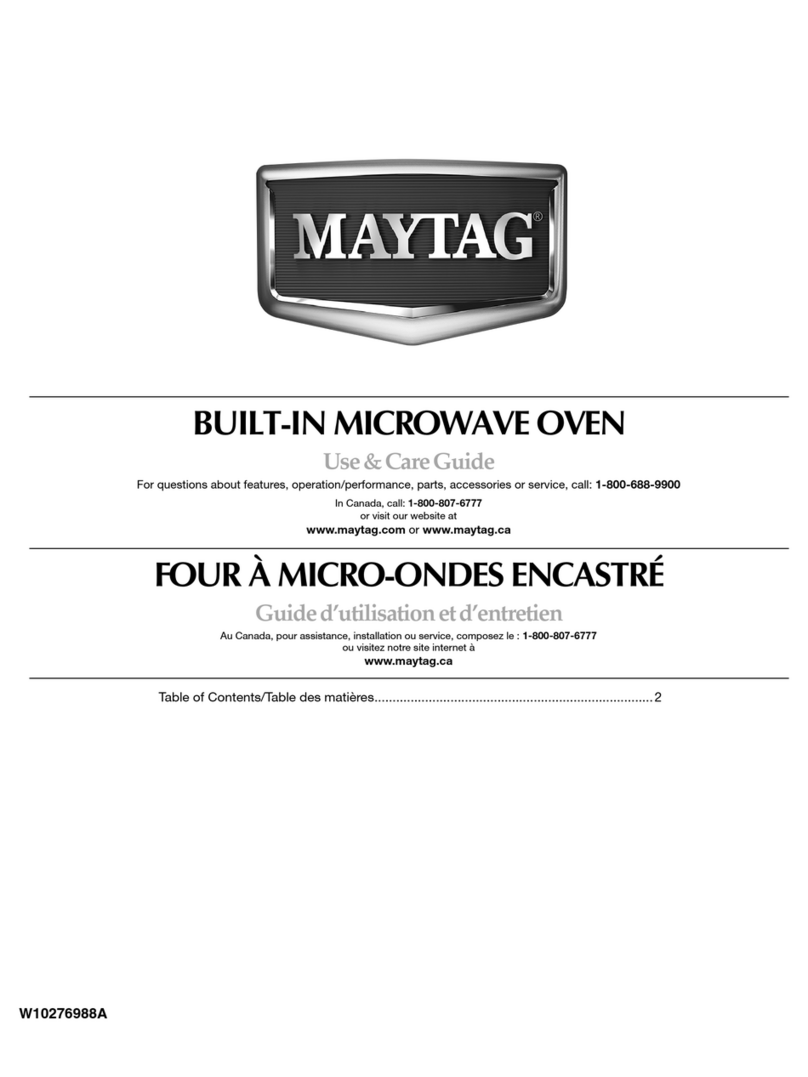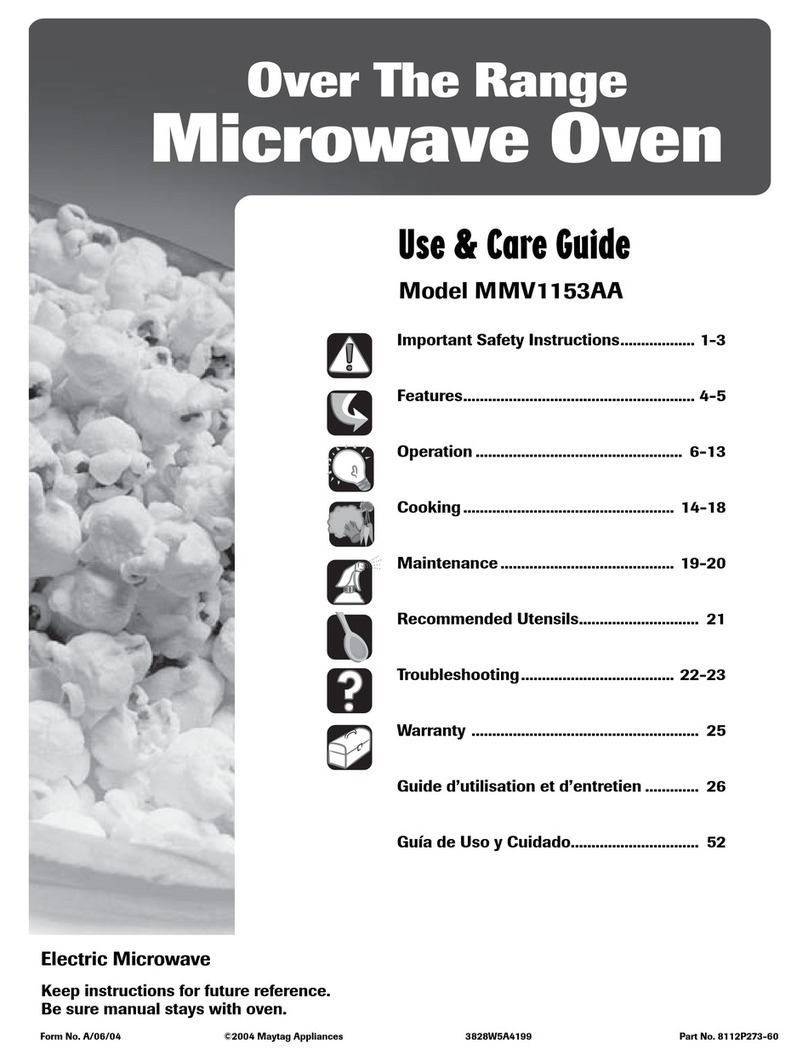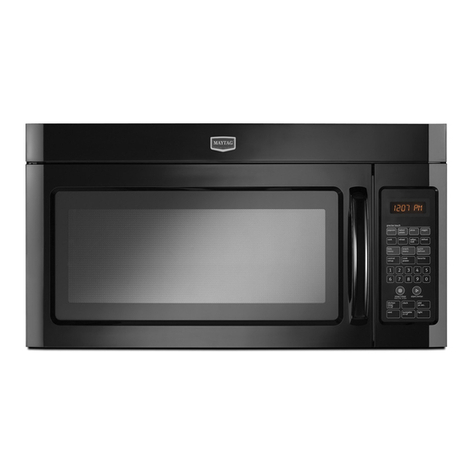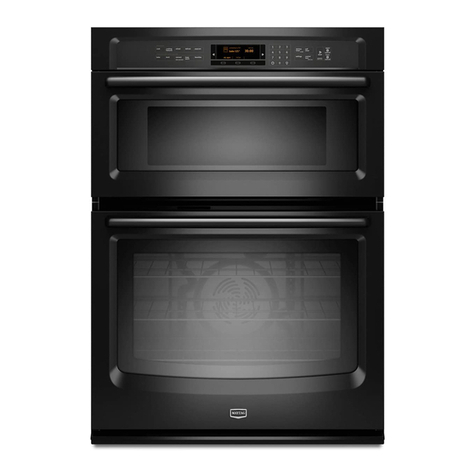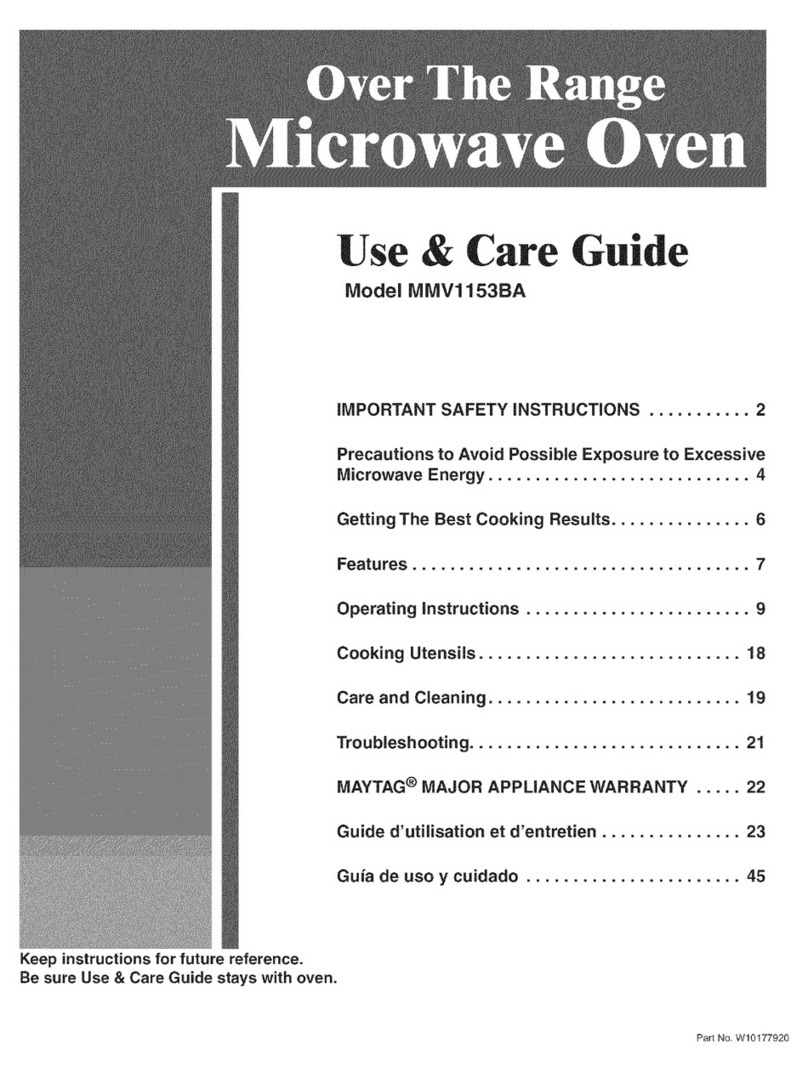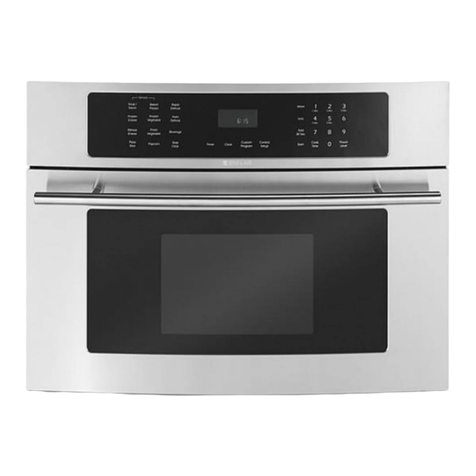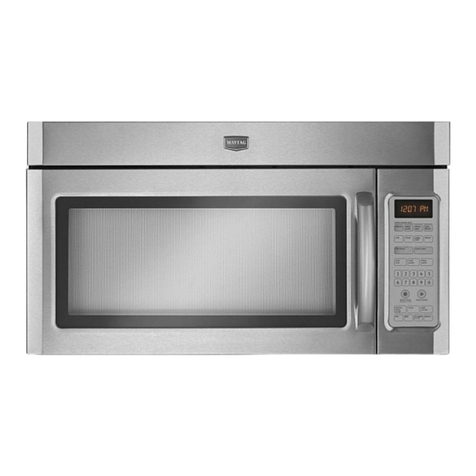6
Other Helpful Information
GETTING THE BEST
RESULTS FROM YOUR
MICROWAVE OVEN
Keep an eye on th ngs. The
nstruct ons n th s book have
been formulated w th great care,
but your success in preparing foo
epen s, of course, on how much
attention you pay to the foo as it
cooks. Always watch your foo while
it cooks. Your microwave oven is
equippe with a light that turns on
automatically when the oven is in
operation so that you can see insi e
an check the progress of your
recipe. Directions given in recipes to
elevate, stir, an the like shoul be
thought of as the minimum steps rec-
ommen e . If the foo seems to be
cooking unevenly, simply make the
necessary a justments you think
appropriate to correct the problem.
Factors affect ng cook ng t mes.
Many factors affect cooking times.
The temperature of ingre ients use
in a recipe makes a big ifference in
cooking times. For example, a cake
ma e with ice-col butter, milk, an
eggs will take consi erably longer to
bake than one ma e with ingre ients
that are at room temperature. All of
the recipes in this book give a range
of cooking times. In general, you will
fin that the foo remains un er-
cooke at the lower en of the time
range, an you may sometimes want
to cook your foo beyon the maxi-
mum time given, accor ing to per-
sonal preference. The governing phi-
losophy of this book is that it is best
for a recipe to be conservative in giv-
ing cooking times. While un er-
cooke foo may always be cooke
a bit more, overcooke foo is ruine
for goo . Some of the recipes, partic-
ularly those for brea , cakes, an
custar , recommen that foo be
remove from the oven when they
are slightly un ercooke . This is not
a mistake. When allowe to stan ,
usually covere , these foo s will con-
tinue to cook outsi e of the oven as
the heat trappe within the outer por-
tions of the foo s gra ually travels
inwar . If the foo s are left in the
oven until they are cooke all the way
through, the outer portions will
become overcooke or even burne .
As you gain experience in using your
microwave oven, you will become
increasingly skillful in estimating both
cooking an stan ing times for vari-
ous foo s.
SPECIAL TECHNIQUES
IN MICROWAVE
COOKING
Brown ng: Meats an poultry that
are cooke fifteen minutes or longer
will brown lightly in their own fat.
Foo s that are cooke for a shorter
perio of time may be brushe with a
browning sauce to achieve an appe-
tizing color. The most commonly
use browning sauces are
Worcestershire sauce, soy sauce,
an barbecue sauce. Since relatively
small amounts of browning sauces
are a e to foo s, the original flavor
of recipes is not altere .
Cover ng: A cover traps heat an
steam an causes foo to cook more
quickly. You may either use a li or
microwave cling-film with a corner
fol e back to prevent splitting.
Cover ng w th waxed paper:
Waxe paper effectively prevents
spattering an helps foo retain
some heat. Since it makes a looser
cover than a li or cling-film, it allows
the foo to ry out slightly.
Wrapp ng n waxed paper or paper
towel: San wiches an many other
foo s containing prebake brea
shoul be wrappe prior to
microwaving to prevent rying out.
Arrang ng and spac ng: In ivi ual
foo s such as bake potatoes, small
cakes, an hors ’oeuvres will heat
more evenly if place in the oven an
equal istance apart, preferably in a
circular pattern. Never stack foo s on
top of one another.
St rr ng: Stirring is one of the most
important of all microwaving tech-
niques. In conventional cooking,
foo s are stirre for the purpose of
blen ing. Microwave foo s, howev-
er, are stirre in or er to sprea an
re istribute heat. Always stir from the
outsi e towar s the center as the
outsi e foo heats first.
Turn ng over: Large, tall foo s such
as roasts an whole chickens shoul
be turne so that the top an bottom
will cook evenly. It is also a goo i ea
to turn cutup chicken an chops.
Plac ng th cker port ons near the
edge: Since microwaves are attract-
e to the outsi e portion of foo s, it
makes sense to place thicker por-
tions of meat, poultry an fish to the
outer e ge of the baking ish. This
way, thicker portions will receive the
most microwave energy an the
foo s will cook evenly.
Elevat ng: Thick or ense foo s are
often elevate so that microwaves
can be absorbe by the un ersi e
an center of the foo s.
P erc ng: Foo s enclose in a shell,
skin, or membrane are likely to burst
in the oven unless they are pierce
prior to cooking. Such foo s inclu e
both yolks an whites of eggs, clams
an oysters, an many whole veg-
etables an fruits.
Test ng f cooked: Because foo s
cook so quickly in a microwave oven,
it is necessary to test foo frequently.
Some foo s are left in the microwave
until completely cooke , but most
foo s, inclu ing meats an poultry,
are remove from the oven while still
slightly un ercooke an allowe to
finish cooking uring stan ing time.
The internal temperature of foo s will
rise between 5° F (3° C) an 15° F
(8° C) uring stan ing time.
